20 rarest horse breeds across the globe
These equines are few and far between – you'd be lucky to find these rare horse breeds
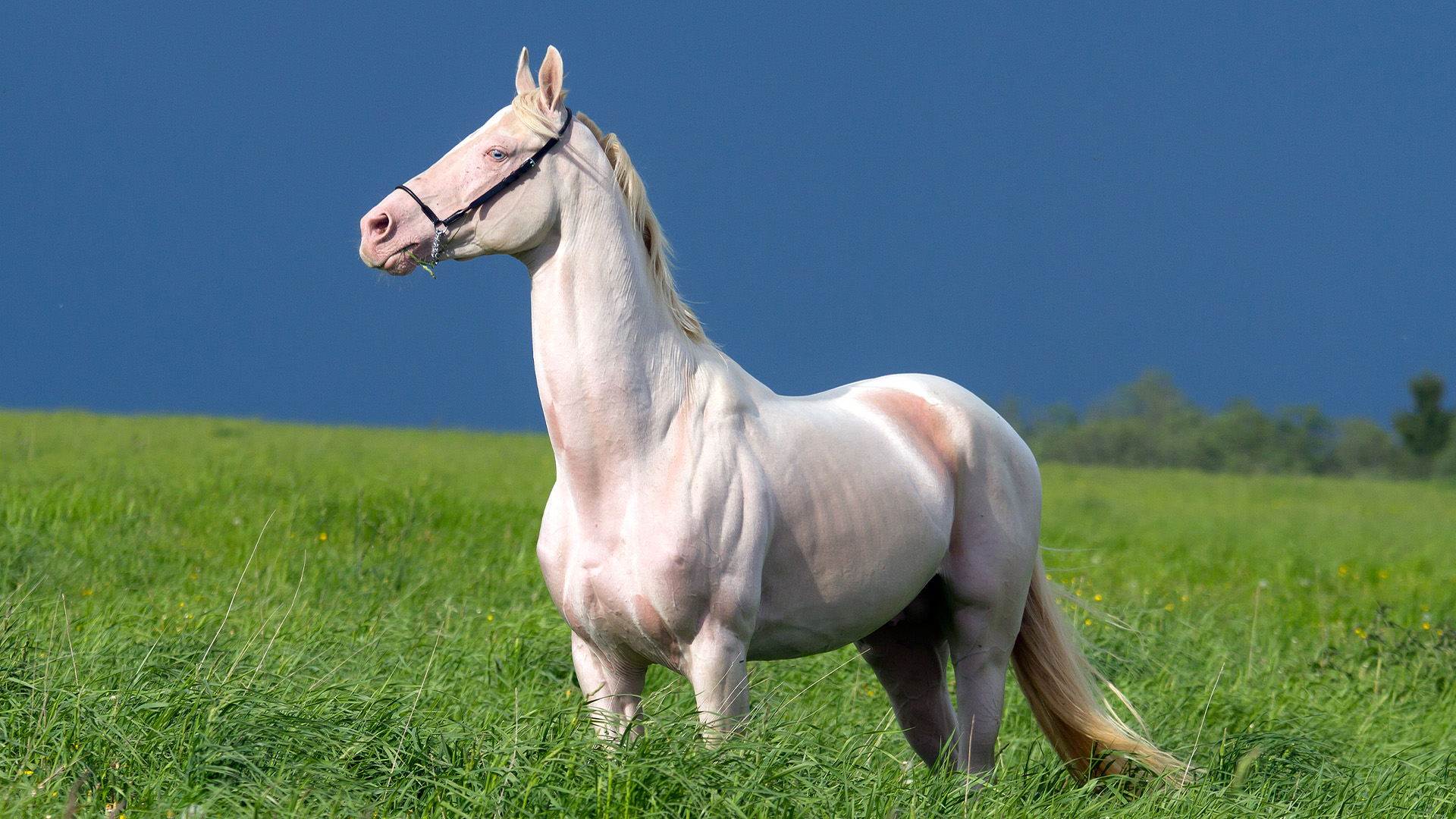
The rarest horse breeds come from all regions of the globe. Some are desert-dwelling equines with ancient roots, while others learned to thrive in the harsh and rugged landscape of the wildest parts of Britain. Others are more recent cultivations, carefully selected for key characteristics such as color and conformation.
One thing all these breeds have in common is scarcity. Indeed, some of these beautiful breeds only have a handful of individuals left. Though small in number, all these elusive equines have so much to offer, from sporting skill and sleek, elegant coats to vital conservation work and cultural heritage. Here are 20 of the rarest horse breeds that deserve your attention.
Rarest horse breeds
1. Clydesdale
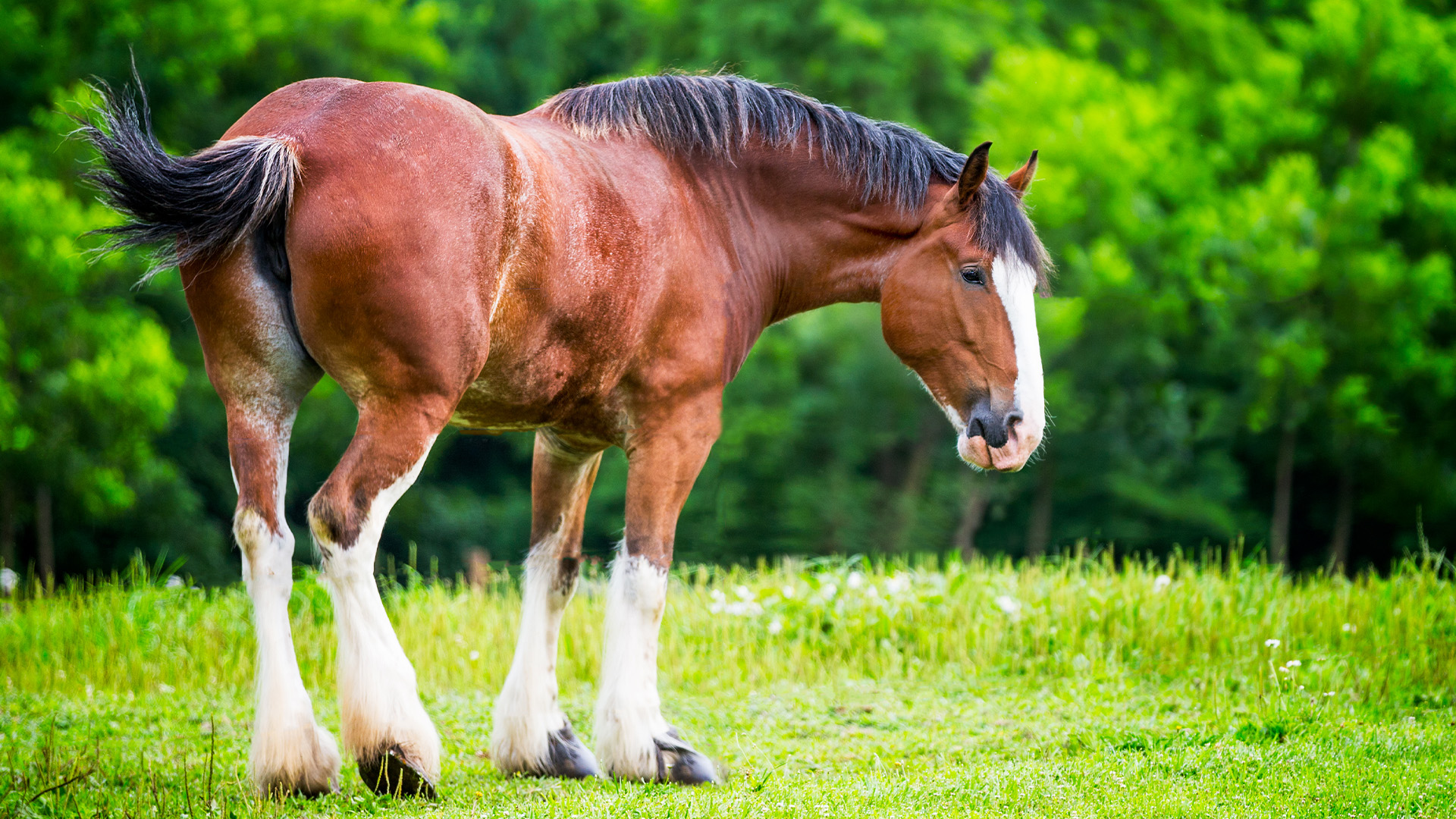
Height: 16hh-18hh
Weight: 1,600-2,400 lbs
Place of origin: Lanarkshire, central Scotland
Use: Farm and heritage work, riding, showing
Clydesdales are closely associated with Budweiser, and many Super Bowl viewers will recognise them from the company’s famous commercials. While it’s true Clydesdales are great for driving work, and they still participate in farm and heritage work such as logging, many also rate them highly as riding horses.
Clydesdales are one of the largest horse breeds, and recognizable by their flowing white feathers that adorn their lower legs. Many also have white blazes down their faces. It’s thought that the global Clydesdale population is fewer than 5,000.
2. Suffolk
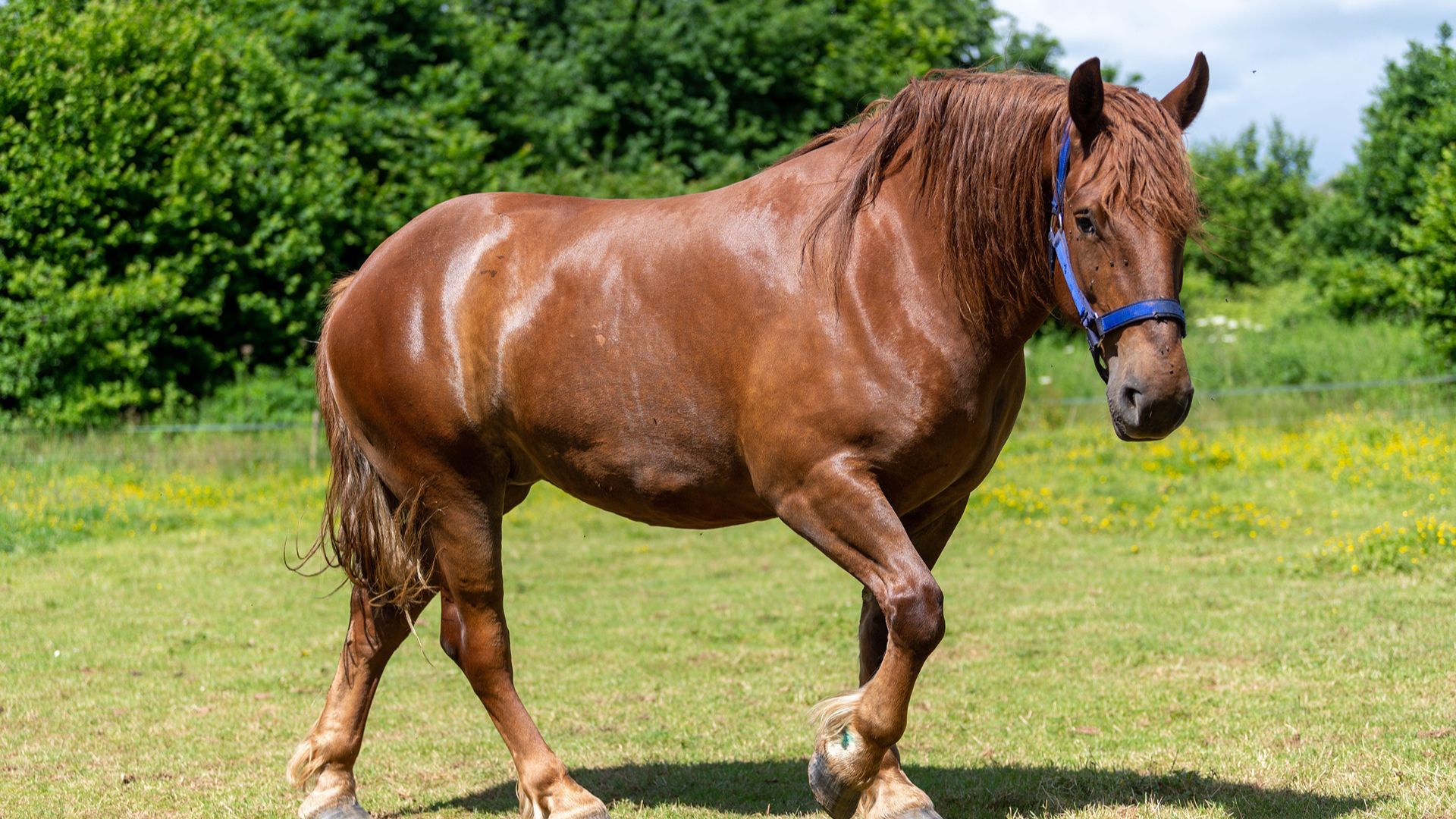
Height: 15.3hh-17.2hh
Weight: 1,500-2000lbs
Place of origin: Suffolk, eastern England
Use: Farm and heritage work, riding and showing
The Suffolk horse is also known as the Suffolk Punch, and is always a brownish orange color known as chestnut, or “chesnut” in local dialect. Like many UK draft breeds, the Suffolk was the precursor to the tractor and worked the land on farms, in forests, and transported goods to market.
Today, the Suffolk horse is often touted to be rarer than the panda. In fact, the breed numbers fewer than 500 in the UK today. Thanks to the work and promotion of breed preservation societies, it’s hoped these numbers will increase.
3. Akhal-Teke
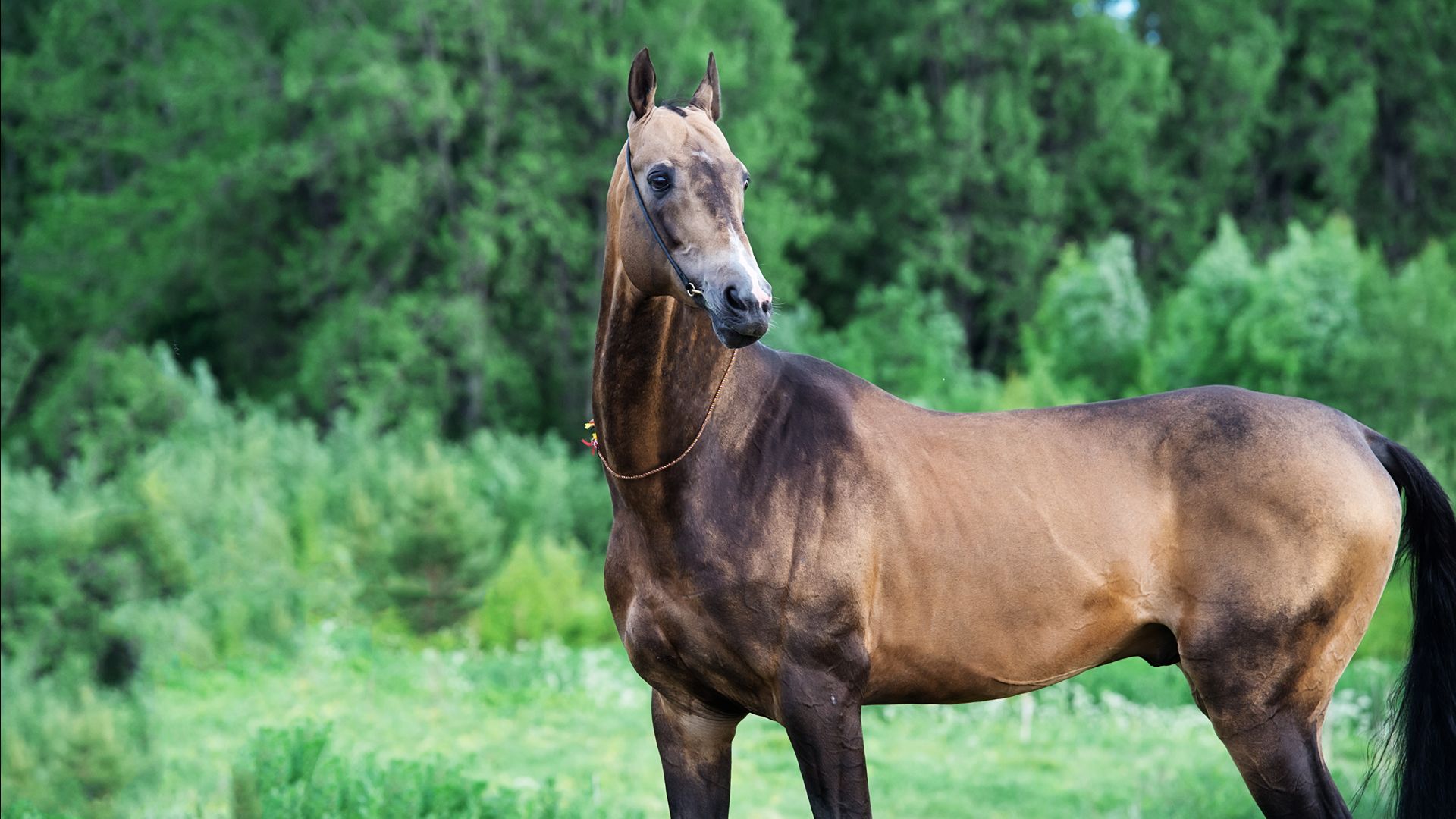
Height: 14.2hh-16hh
Weight: 950-1,100lbs
Place of origin: Turkmenistan, Central Asia
Use: Racing, endurance, competitive riding
The Akhal-Teke spent generations roaming the Kakarum Desert in Central Asia and has ancient roots – Macedonian King Alexander the Great is said to have ridden them. Records of the breed date back approximately 3,000 years, but equine remains found at a Siberian burial site dating as far back as the 6th century BC are remarkably similar to the Akhal-Teke of today. The Akhal-Teke is frequently crossed with thoroughbreds and sport horse breeds to harness their athletic abilities and flair for endurance.
Get the best advice, tips and top tech for your beloved Pets
Akhal-Tekes have a distinct conformation, including a long, slender neck that tapers at the almond-shaped head, which is carried high. They are also famed for their coats’ shimmering sheen-like quality. There are around 6,600 Akhal-Teke in the world, mostly found in Turkmenistan, where they are a national symbol.
4. Carolina Marsh Tacky
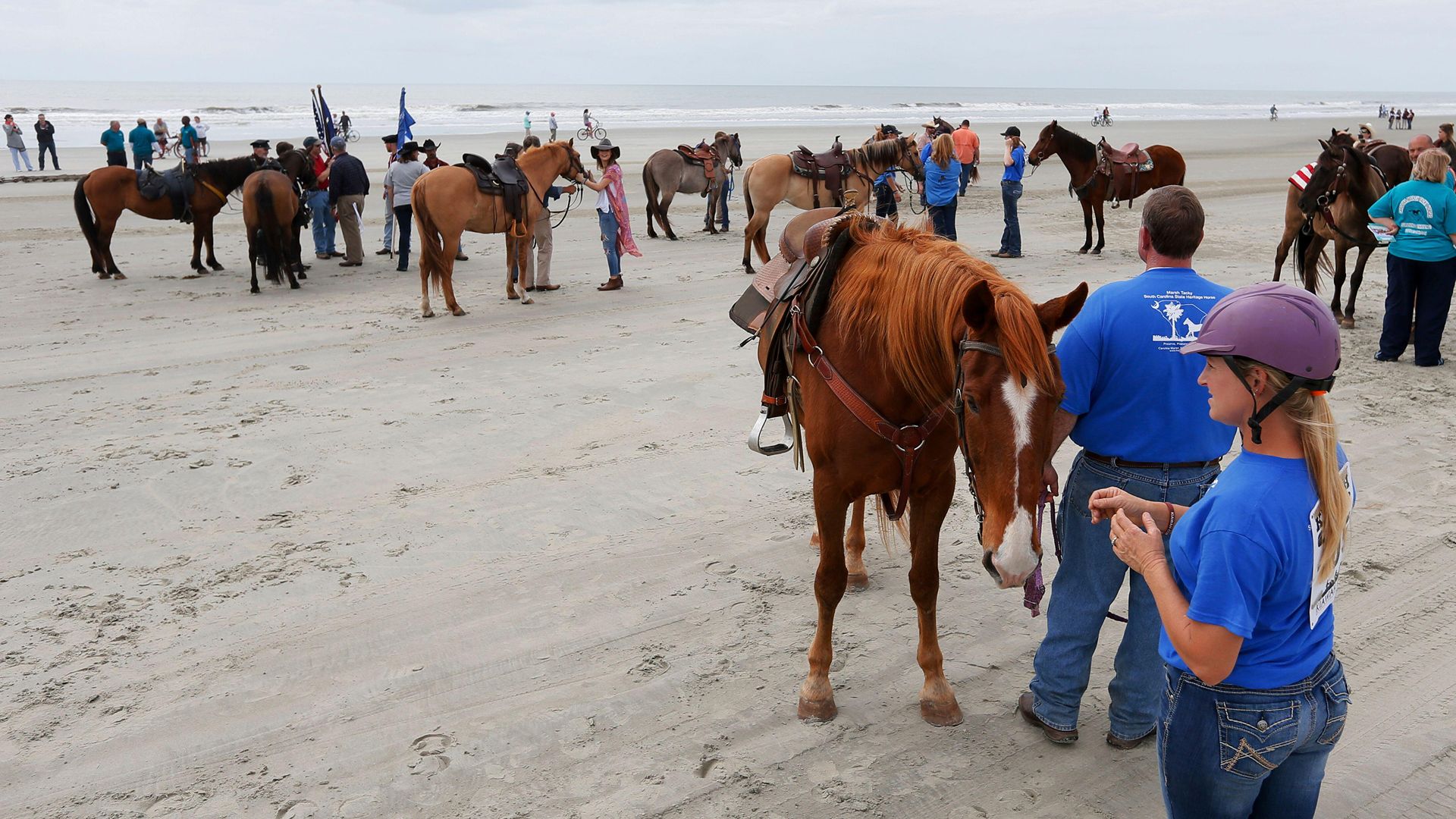
Height: 13.3hh-15hh
Weight: 700-900 lbs
Place of origin: South Carolina, US
Use: cattle and ranch work, roping, reining
Marsh Tackies are an American saddle horse descended from colonial Spanish equines brought to the coast of South Carolina in the 1500s. The breed was developed on the Sea Islands of South Carolina to create a small, sturdy and surefooted mount that can navigate the soft and arduous marsh terrain.
Marsh Tackies are also well adapted to the hot and humid climate of the marshes, both in their ability to withstand heat and remain unflustered with their calm and easygoing manner. An integral element of South Carolina culture, they are extremely rare, with an estimated 400 Tackies alive today.
5. Exmoor
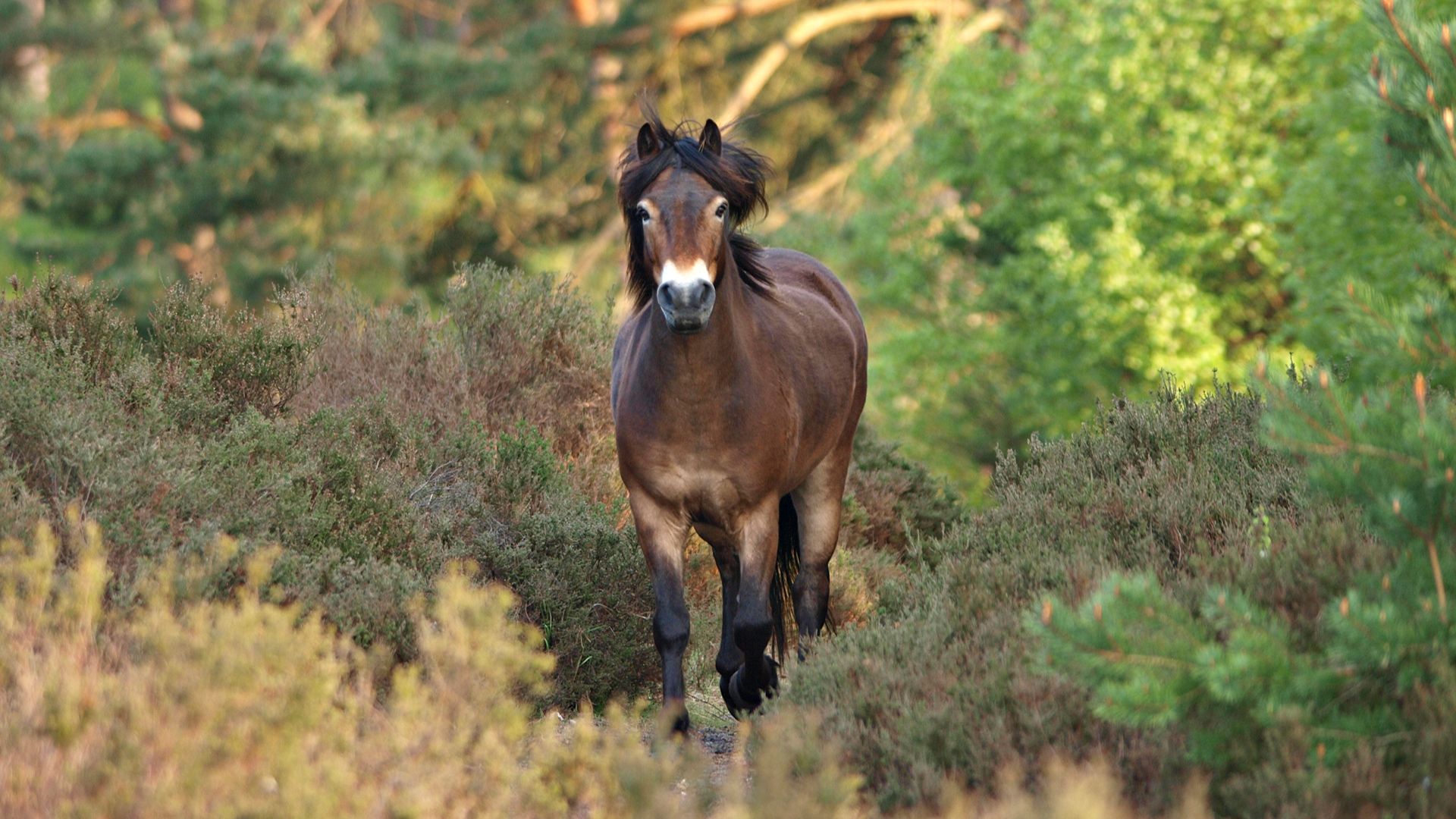
Height: 11.2hh-12.3hh
Weight: 700-800lbs
Place of origin: Devon, southwest England
Use: Riding, showing, conservation
Exmoor ponies are named for the English national park where they can be found. They are widely considered to be one of the world’s oldest equine breeds. Some theories posit they have prehistoric origins, descending from wild horses from north-west Europe more than a hundred millennia ago.
Exmoors are small and stout, often bay in color, and are recognizable for the white markings that encircle their eyes and muzzles. Living wild in harsh climates for 100s of generations has made them very hardy and easy keepers – many owners keep them out all year round with no need to blanket. There are thought to be around 2,000 Exmoors worldwide.
6. Dartmoor
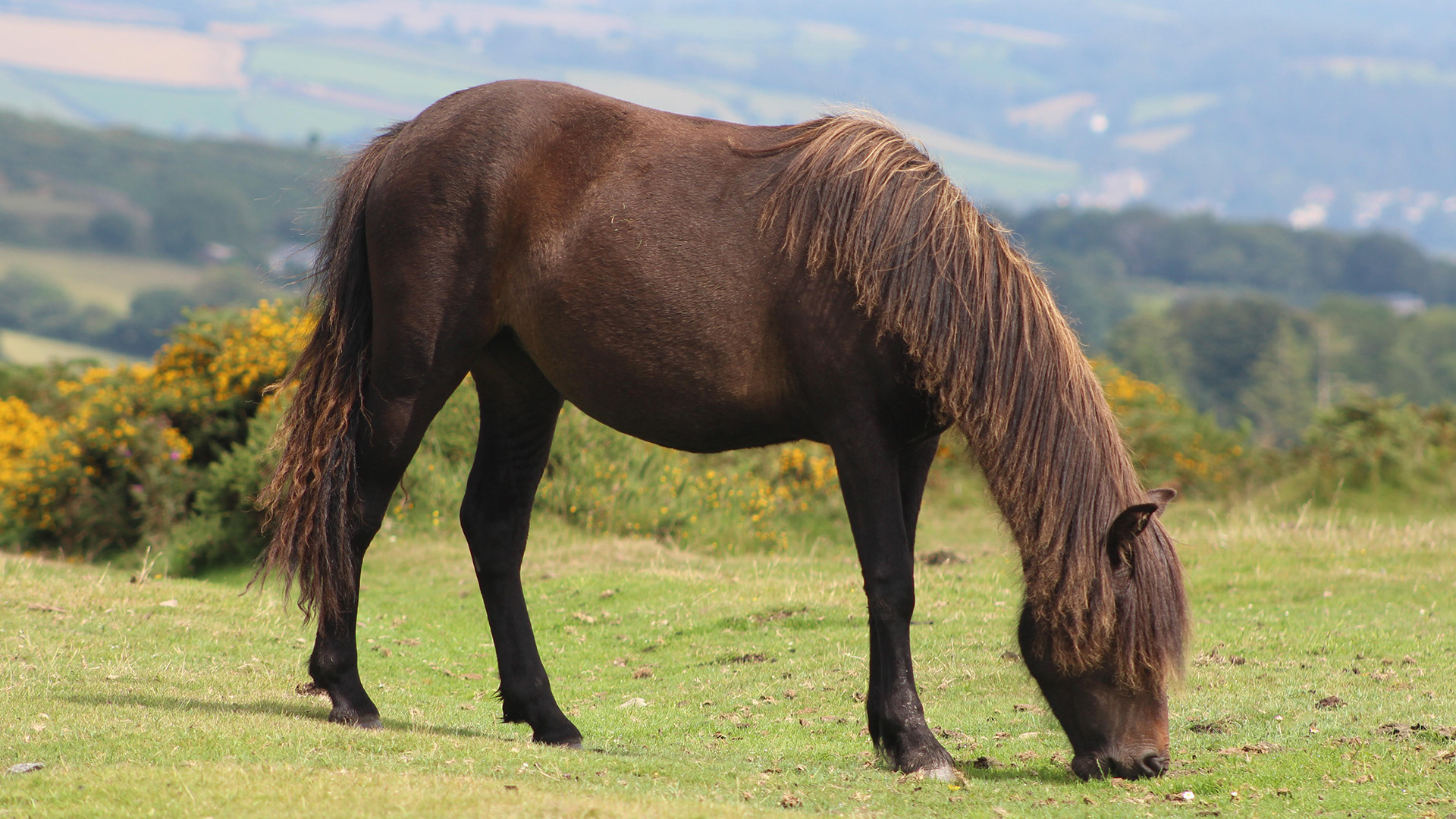
Height: up to 12.2hh
Weight: 500-700lbs
Place of origin: Devon, southwest England
Use: Riding, showing, conservation
This English moorland pony has been a recorded inhabitant of Dartmoor, another Devonshire national park, since the Middle Ages. They’re sure-footed, tough, and able to withstand the harshest wintry conditions, which makes them great grazers for conservation and rewilding projects.
Dartmoor ponies are generally one block dark color. Semi-wild pony numbers on Dartmoor have dropped in the last 25 years, and there are around 800 roaming the moorland. Estimates put the global population of Dartmoor ponies at around 2,000-5,000.
7. Marwari
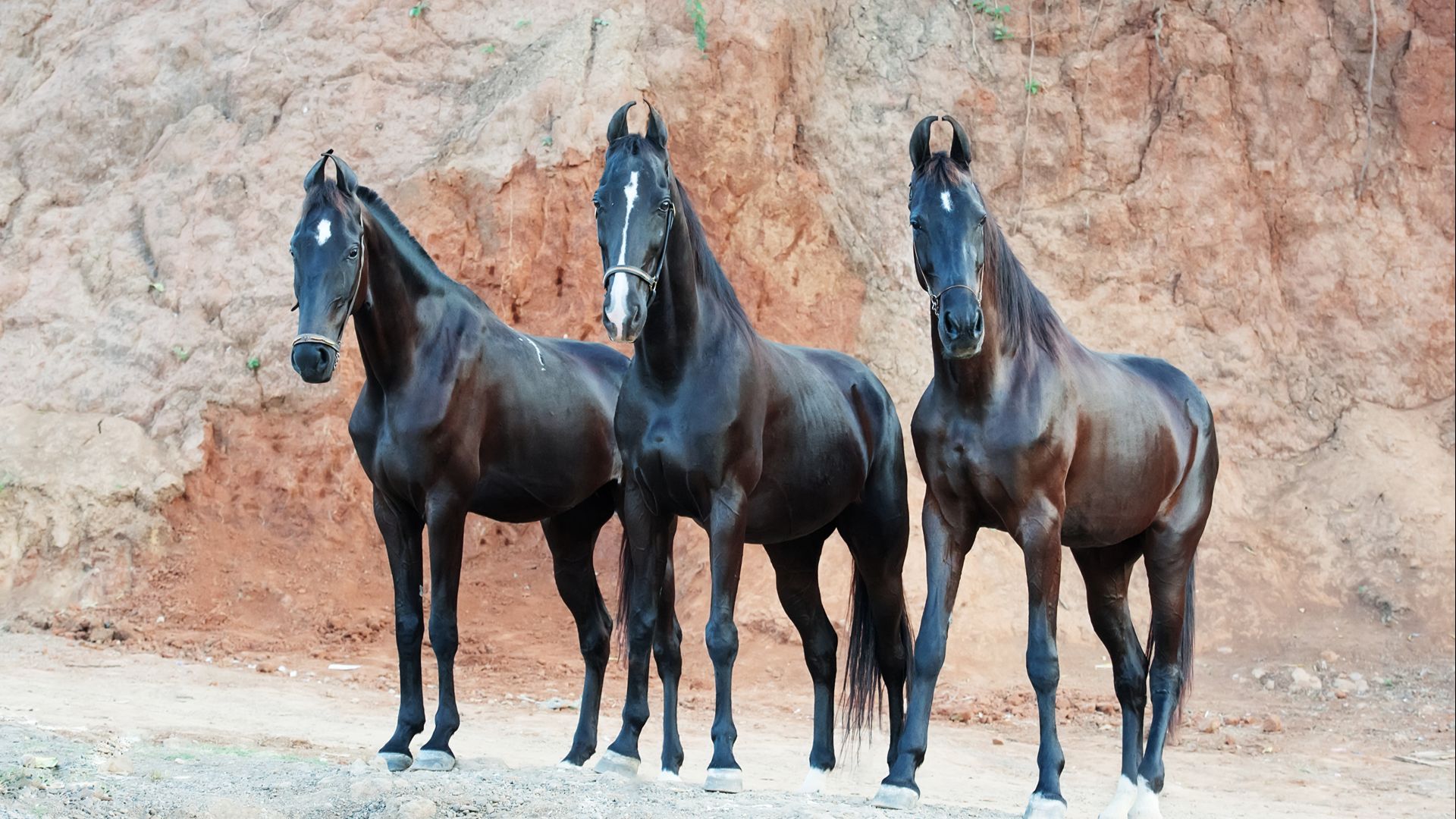
Height: 14hh-15.1hh
Weight: 750-1,000 lbs
Place of origin: Marwar (Jodhpur), northwest India
Use: endurance, polo, leisure riding
Once the stuff of myth and legend, genome mapping in the 2010s revealed Arabian and Mongolian components to this Indian breed’s make-up, confirming stories that native ponies were crossed with Arabians to produce the breed. Marwaris were then cultivated by the Rathores, rulers of the Marwar region, who used them as cavalry and riding horses.
Marwaris fell out of favour in the 20th century as British colonizers preferred the thoroughbred. Today, they number about 5,000 worldwide. They can be recognized by their iconic curved ears and athletic build.
8. American Cream Draft
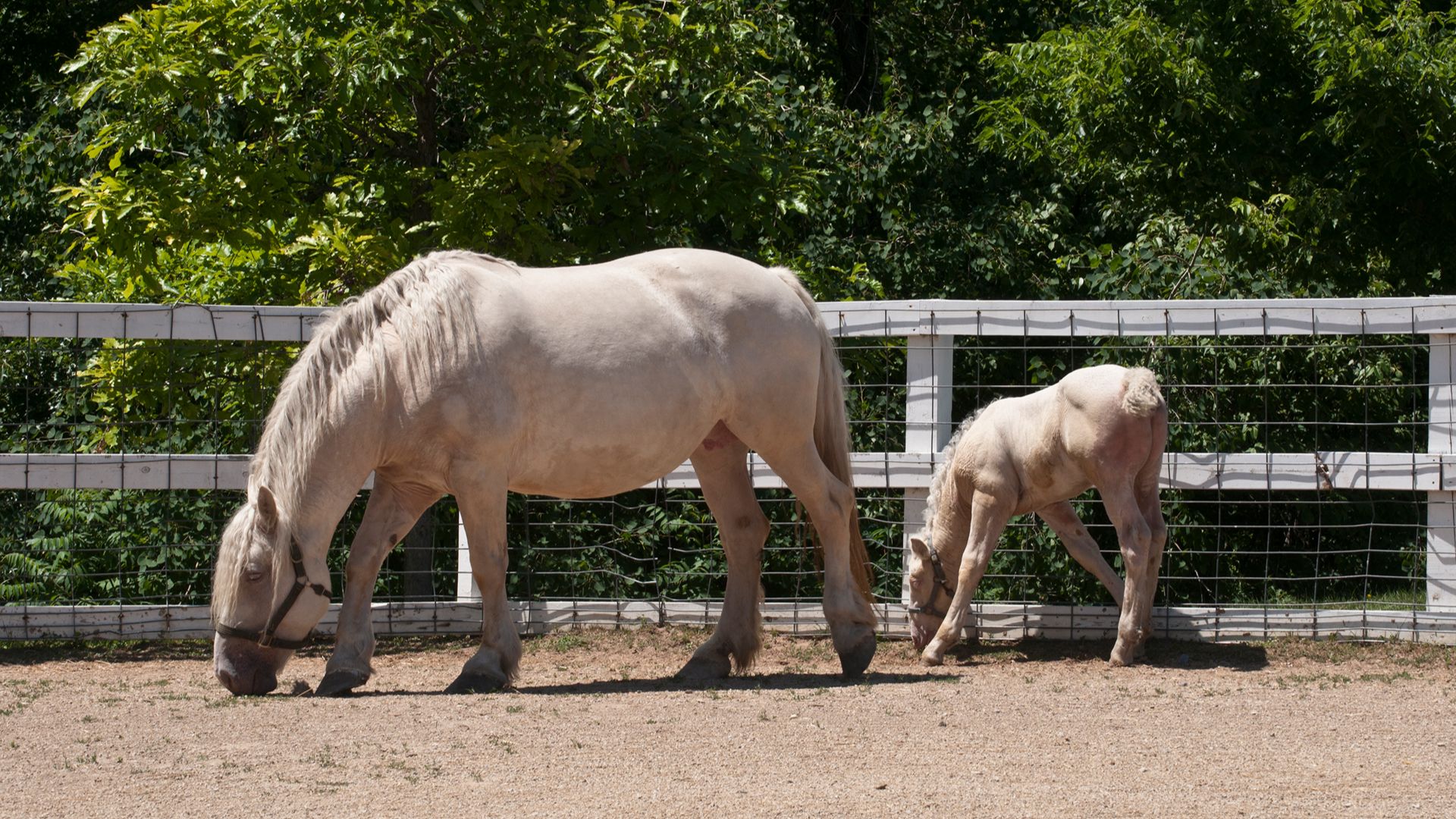
Height: 15hh-16.3hh
Weight: 1,600-1,800 lbs
Place of origin: Iowa, US
Use: harnessing, hitching and driving work
The American Cream is the only draft horse breed developed in the USA. They became popular in the 1930s, and one owner in particular, Clarence T Rieson, was particularly influential in cultivating the breed. Indeed, he was one of the founding members of the American Cream Draft Horse Association.
Sadly, the breed was established just as the market for draft horses was obliterated by the rise of mechanization. Thankfully, a few owners kept hold of their American Creams, and breed development efforts resumed in the 1980s. Though rare, with approximately 400 individuals registered, it’s hoped dedicated breeding programmes and renewed interest will help numbers rise.
9. Sorraia
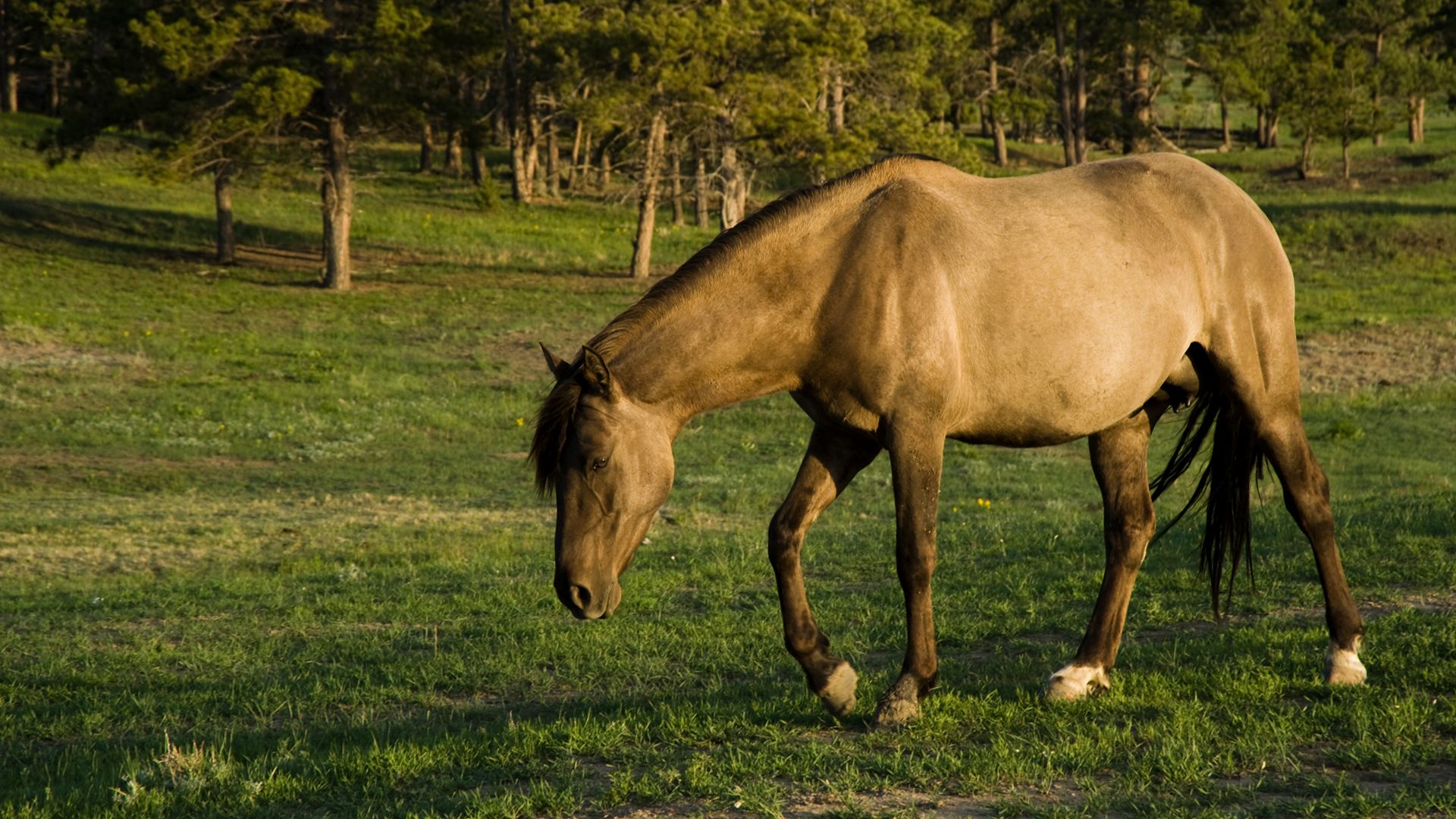
Height: 13.3hh-14.3hh
Weight: 700-900 lbs
Place of origin: Iberian peninsula, Portugal
Use: showing, herding, dressage
For a long time, the Sorraia existed virtually unknown beyond local knowledge, but awareness began to spread from 1920. At this point, a Portuguese paleontologist and zoologist, Dr Roy d’Andrade, came across the breed in the lowlands of the Iberian Peninsula by the river Sorraia.
Occasionally, locals would catch them and train them for herding or farming work, but they were largely an untouched equine population. Conservation efforts began in the 1930s, and the small herd expanded. There is still much to learn about Sorraia’s origins, but they have primitive markings such as a black dorsal stripe and “zebra markings” on their legs.
Prehistoric cave art resembling the Sorraia suggests this breed is ancient indeed. With an estimated 200-300 individuals worldwide, the Sorraia isn’t just one of the rarest horse breeds, but also critically endangered.
10. Eriskay
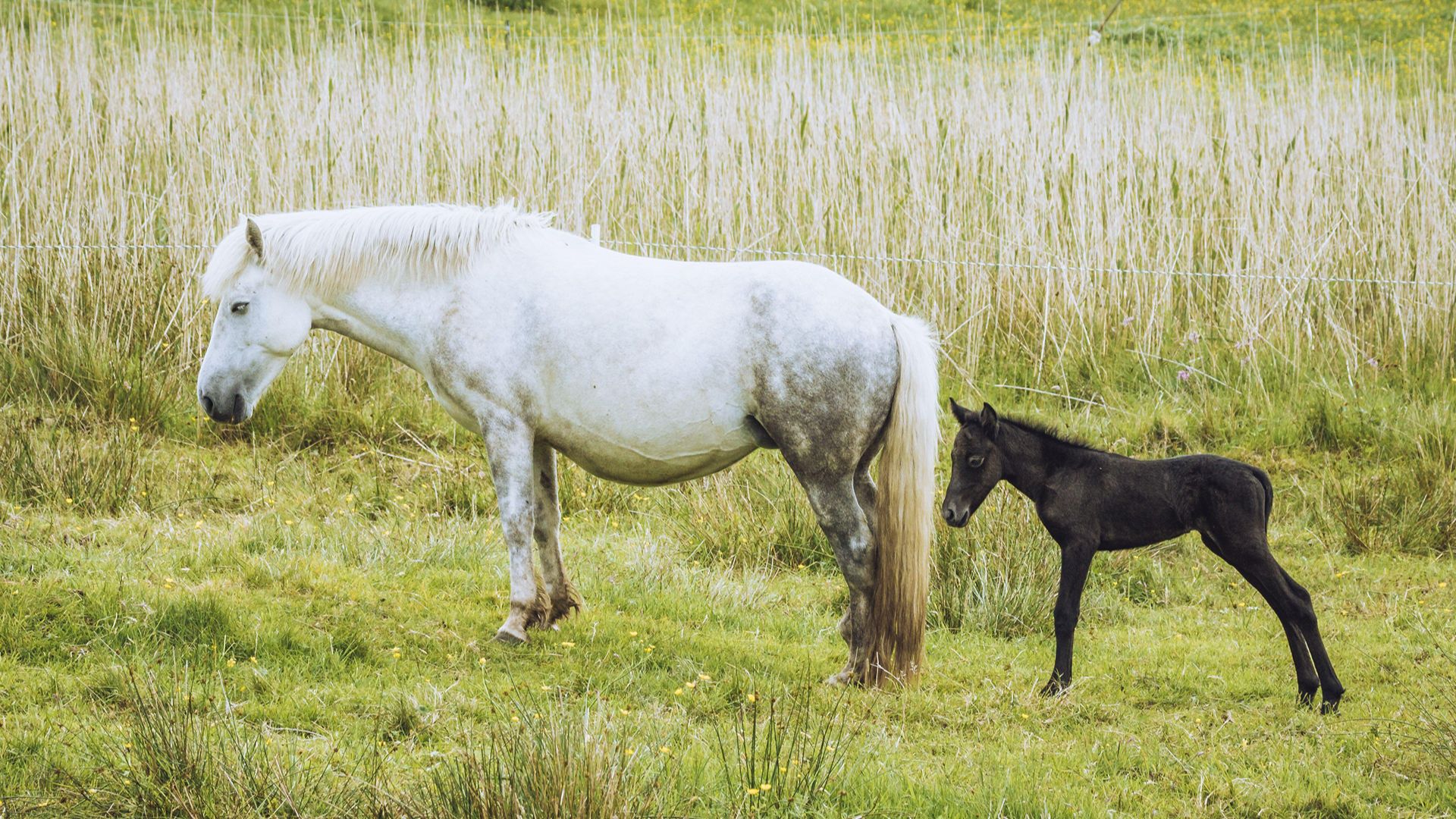
Height: 12hh-13.2hh
Weight: 700-880lbs
Place of origin: Western Isles of Scotland, UK
Use: Riding, driving, showing, conservation
Born dark but usually turning grey with age, Eriskay ponies are docile and built to thrive in harsh Scottish winters. They were invaluable to the people of the Hebridean Islands for farm work and hauling peat for winter fuel, but as mechanization took hold in the latter half of the 20th century, their numbers declined.
Eriskays’ thriftiness makes them great conservation grazers, while their strength and stamina mean they are ideal for driving. They have sweet natures, which makes them popular riding ponies for children. It’s estimated there could be fewer than 500 Eriskay ponies worldwide.
11. Highland
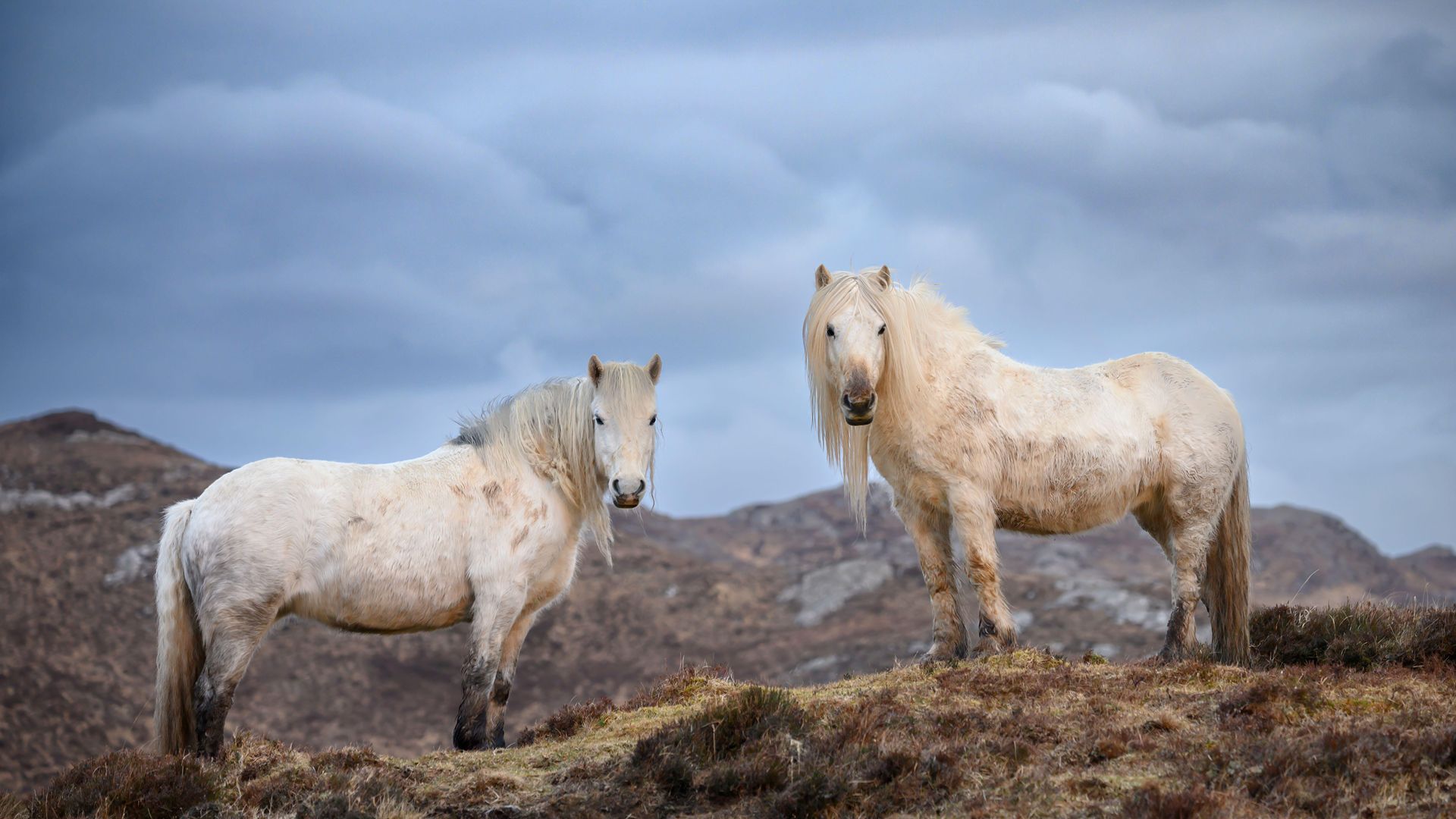
Height: 12hh-13.2hh
Weight: 700-880lbs
Place of origin: Western Isles of Scotland, UK
Use: Riding, driving, showing, conservation
Highland ponies look similar to Eriskays, but despite their geographic proximity, the two breeds are genetically quite different.
Highlands are best known as the favored breed of the late Queen Elizabeth II. As sure-footed, docile, and good-natured mounts, they were the perfect choice to carry the British monarch, and the late Queen was often seen riding them well into her 90s. Today, an estimated 5,500 Highland ponies can be found worldwide.
12. Noma
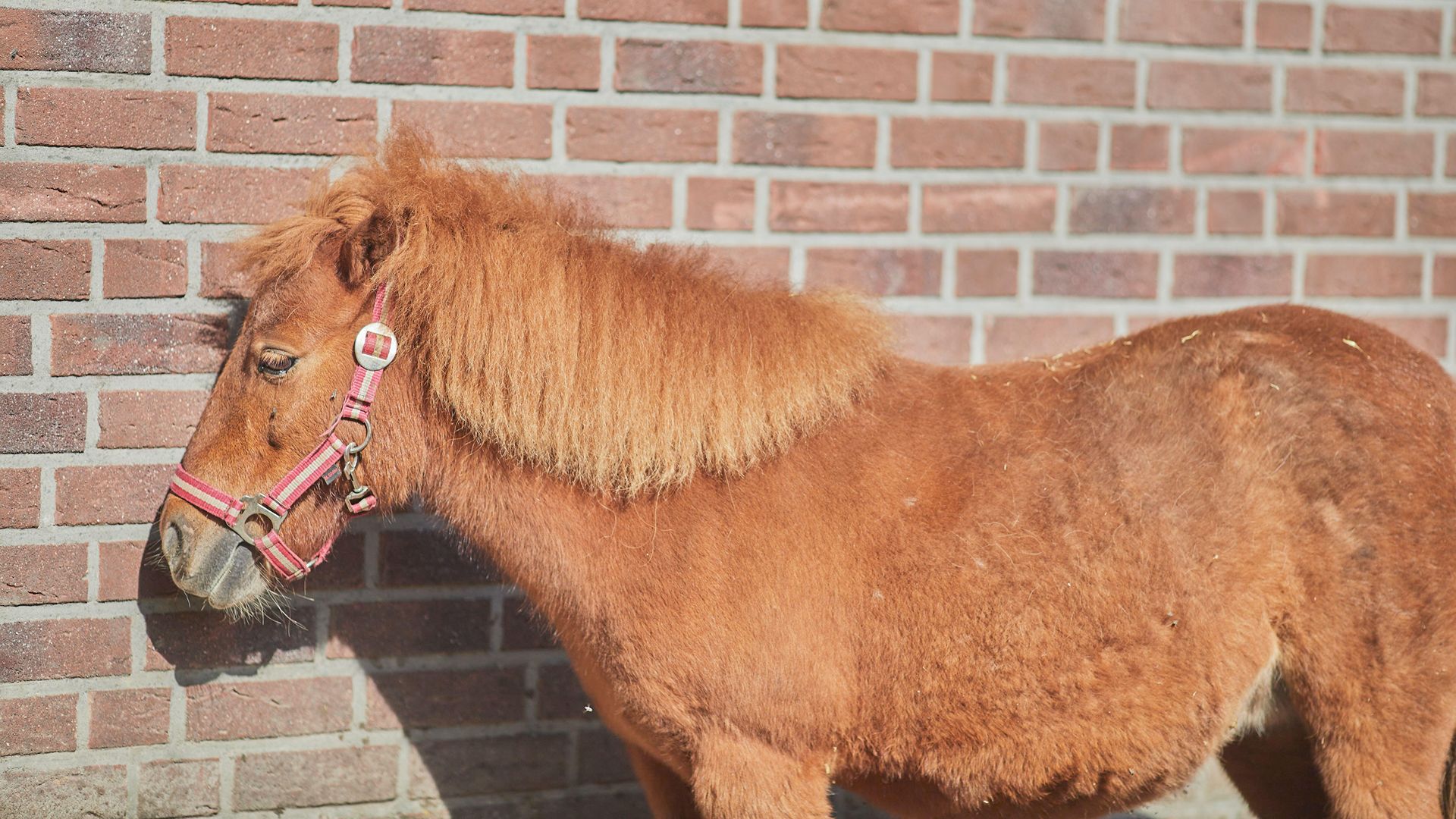
Height: Around 10hh
Weight: 400-600lbs
Place of origin: Shikoku, Japan
Use: pack work, children’s riding, hippo therapy
The small but mighty Noma was favoured by Japanese farmers from the 17th century for its agility and stamina – it made a superb pack pony for mountainous terrain. However, the breed declined after the Russo-Japanese War of the early 20th century, when taller horses were more useful for military purposes.
By 1978, there were just six individuals left: a pair at Tobe Zoo and a stallion and three mares belonging to a private owner. A government-backed breeding programme was established, and that number has grown to around 80 today.
13. American Bashkir Curly
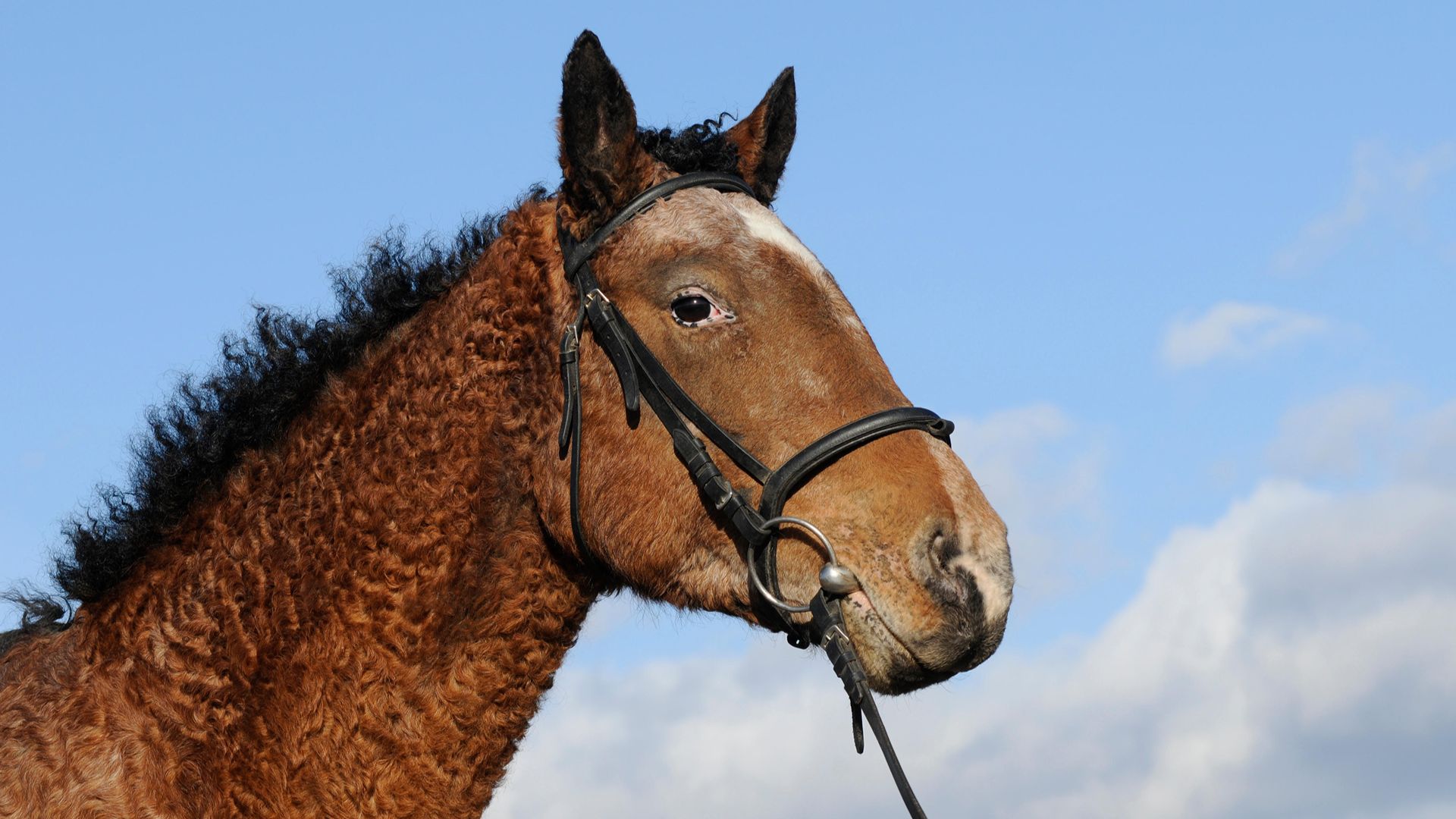
Height: 14hh-16hh
Weight: 800-1,200 lbs
Place or origin: Central Nevada, US
Use: range work, roping, reining, driving, endurance, competitive and leisure riding
This interesting breed is instantly recognizable for its curly coat with a crushed velvet look, which is also hypoallergenic. Also known as the North American Curly Horse, records show the breed was discovered at the turn of the 20th century by Peter Damele, who came across three curly-coated equines while riding out through the Nevada desert.
Curlies can be found in all horse colors and have a sturdy build with strong, heavy-boned legs. Their hardiness and gentle nature make them great all-around saddle horses. Estimates put their numbers anywhere between 1,000-4,000 worldwide.
14. Caspian

Height: 10-12hh
Weight: 400-600 lbs
Place of origin: Iran (formerly known as Persia)
Use: driving, hippo therapy, children’s riding
Small in stature though still considered a horse for its conformation, the Caspian has ancient Persian roots with genetic links the Turkmenistan’s Akhal-Teke. Though not a new breed, the Caspian underwent something of a resurgence in the 1960s when Louise Firouz, a native of Virginia, and her Iranian husband, Narcy, were looking for ideal horses for children. They heard about the small-but-capable Caspian and began a breeding program.
In the 1970s, the late Prince Philip of England was gifted a breeding pair of Caspians, and conservation efforts took off. In the last ten years, studs in the UK have closed and numbers have dwindled to fewer than 500 in Britain, perhaps around 2,000 worldwide.
15. Camarillo White Horse
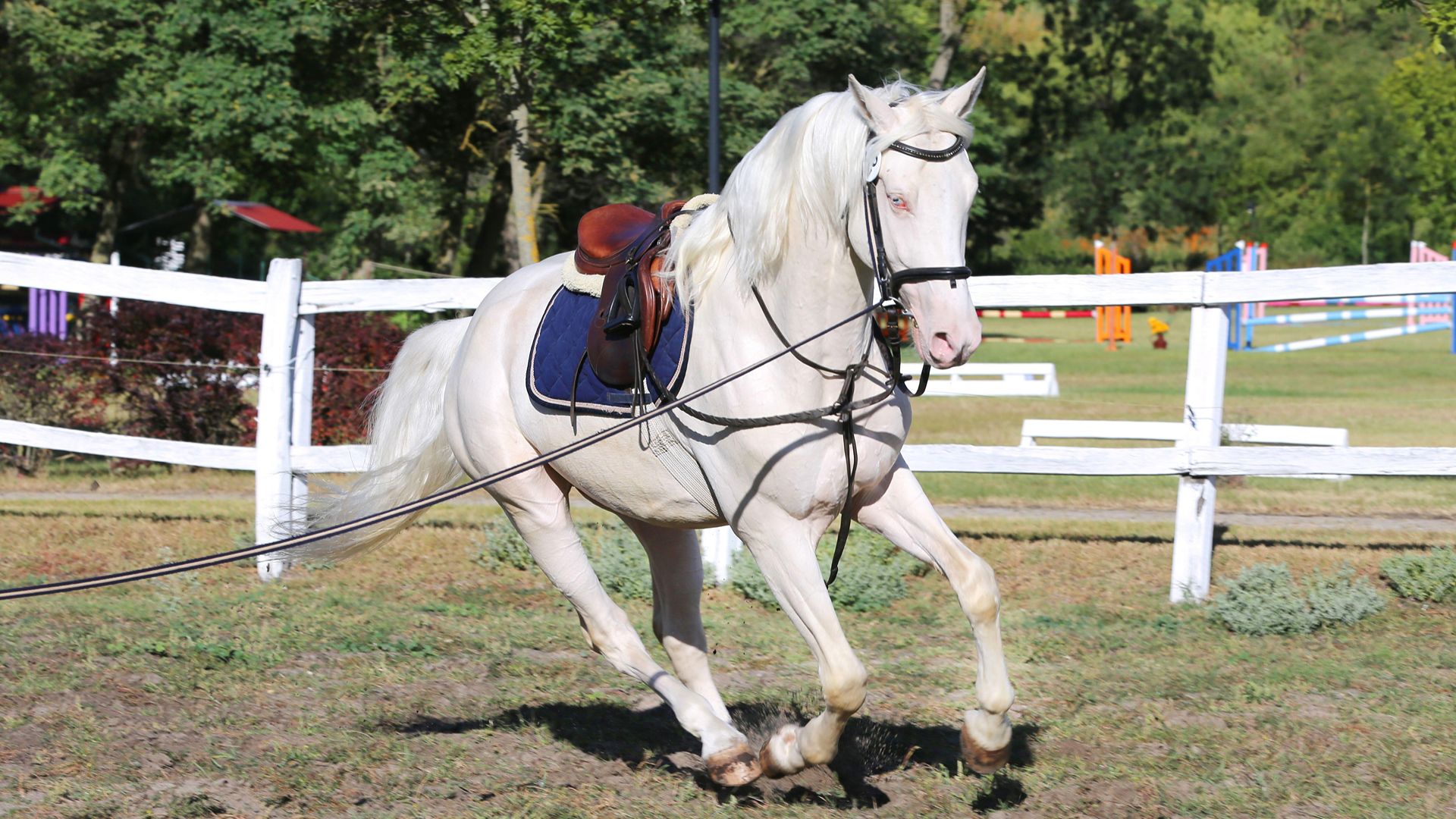
Height: 14.2hh-17hh
Weight: 1,100-1,300
Place of origin: California, US
Use: leisure riding, parading
There are an estimated fewer than 30 Camarillo White Horses in existence, arguably making it one of the rarest horse breeds in the world. A relatively new breed, and a breed native to America, the Camarillo was cultivated from 1921 by a California family of the same name. The foundation stallion, ‘Sultan’, was purchased by the family from the 1921 Sacramento State Fair and bred with Morgan mares at their ranch in Ventura County.
The Camarillo is known for its pure white color with pink skin. Many greys are born dark and slowly turn, but the Camarillo is pure white from birth. A pure white horse is extremely hard to breed, and mating two white horses only has a 50% chance of breeding a white foal. All known white horses have one copy of the white gene, and it is understood that two copies would result in a failed pregnancy.
16. Cleveland Bay
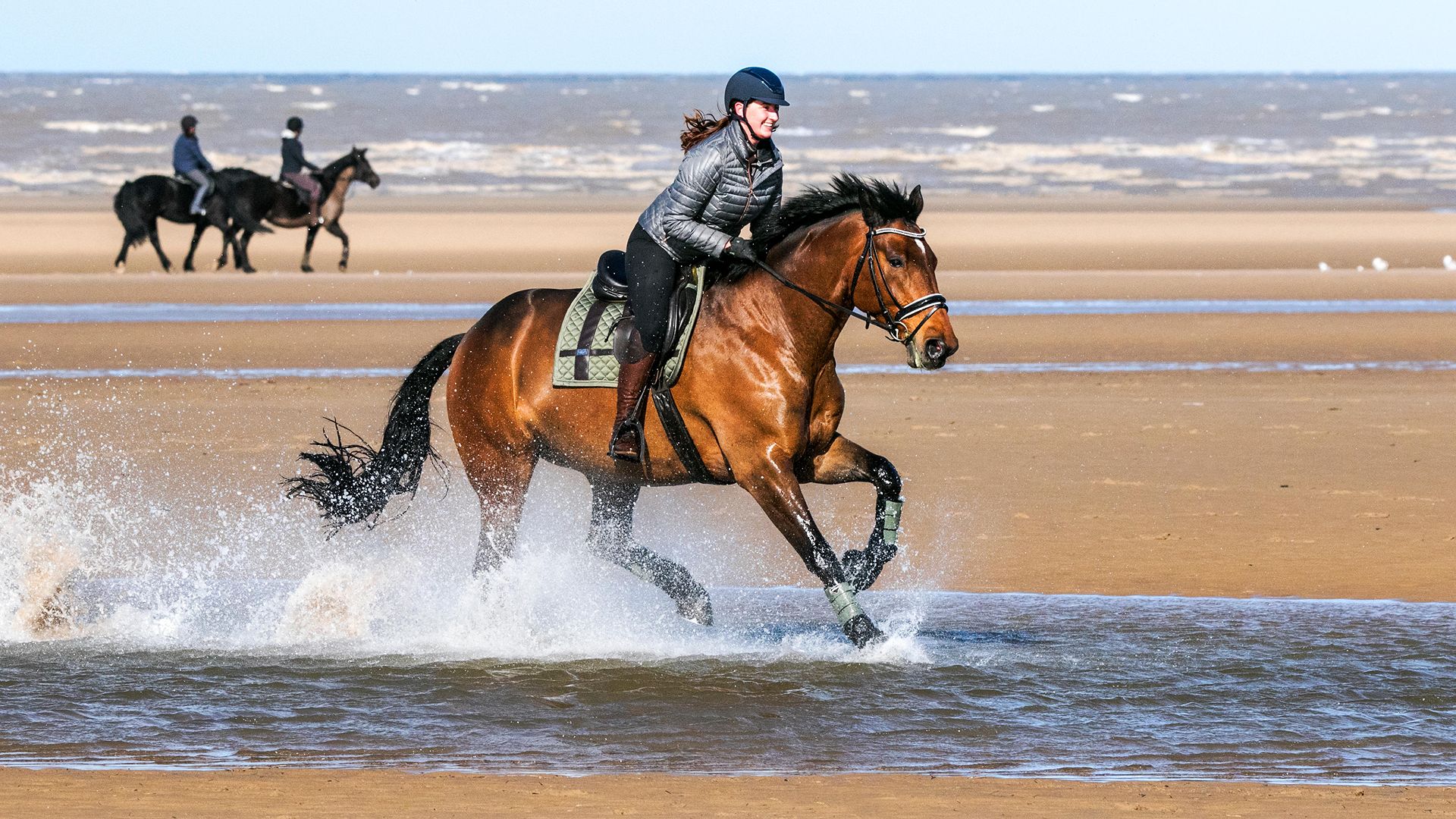
Height: 16hh-16.2hh
Weight: 1,200 and 1,600lbs
Place of origin: Yorkshire, northern England
Use: competitive and leisure riding, showing
The Cleveland Bay’s history can be traced back to the 17th century. The breed is named for its bay colouring and its native district of Cleveland in the northern English county of Yorkshire. They are short-backed and strong, which made them ideal for pulling heavy loads of wool from the farms to the mills of northern England. They were also widely used as carriage horses.
Today, Cleveland Bays are prized as riding and driving horses and are seen competing in a variety of activities, from jumping to showing. There are approximately 1,000 Cleveland Bays worldwide.
17. Przewalski’s Wild Horse
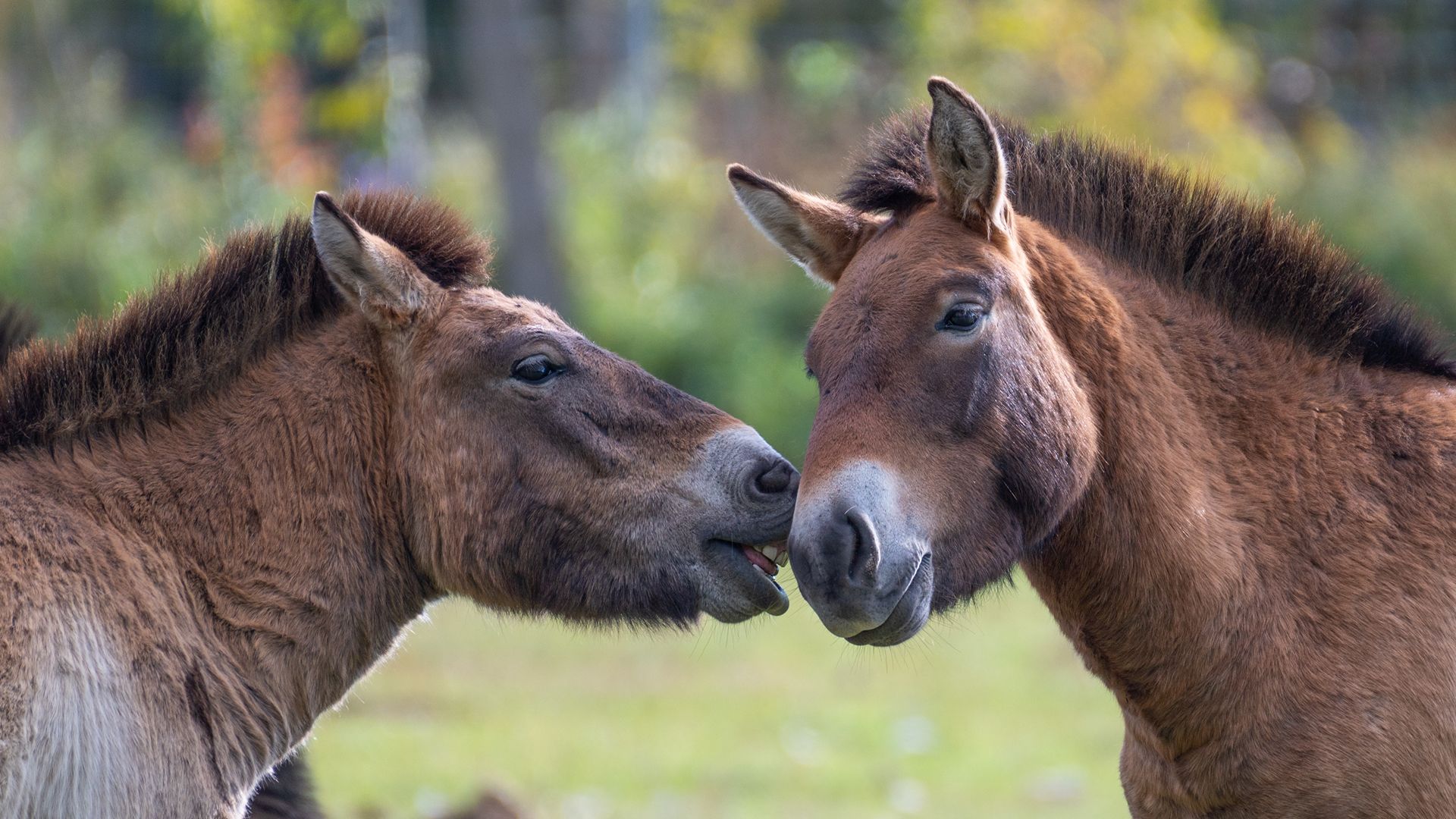
Height: 12hh-14hh
Weight: around 660 lbs
Place of origin: Steppes of Central Asia
Use: conservation
Przewalski’s horse is the only truly wild species of horse in the world. They can be identified by their stocky build, short legs, straight backs, zebra-like mane, and dorsal stripe running from the wither, or base of the mane, to the dock, or tail bone.
Extinct in the wild, the Przewalski's horse can be found at reintroduction sites in Mongolia, China, and Kazakhstan. Believed to have diverged from a common ancestor half a million years ago, the Przewalski has 66 chromosomes, whereas domesticated horses have 64. They are also known as Takhi, which means “spirit” in Mongolian.
18. Canadian
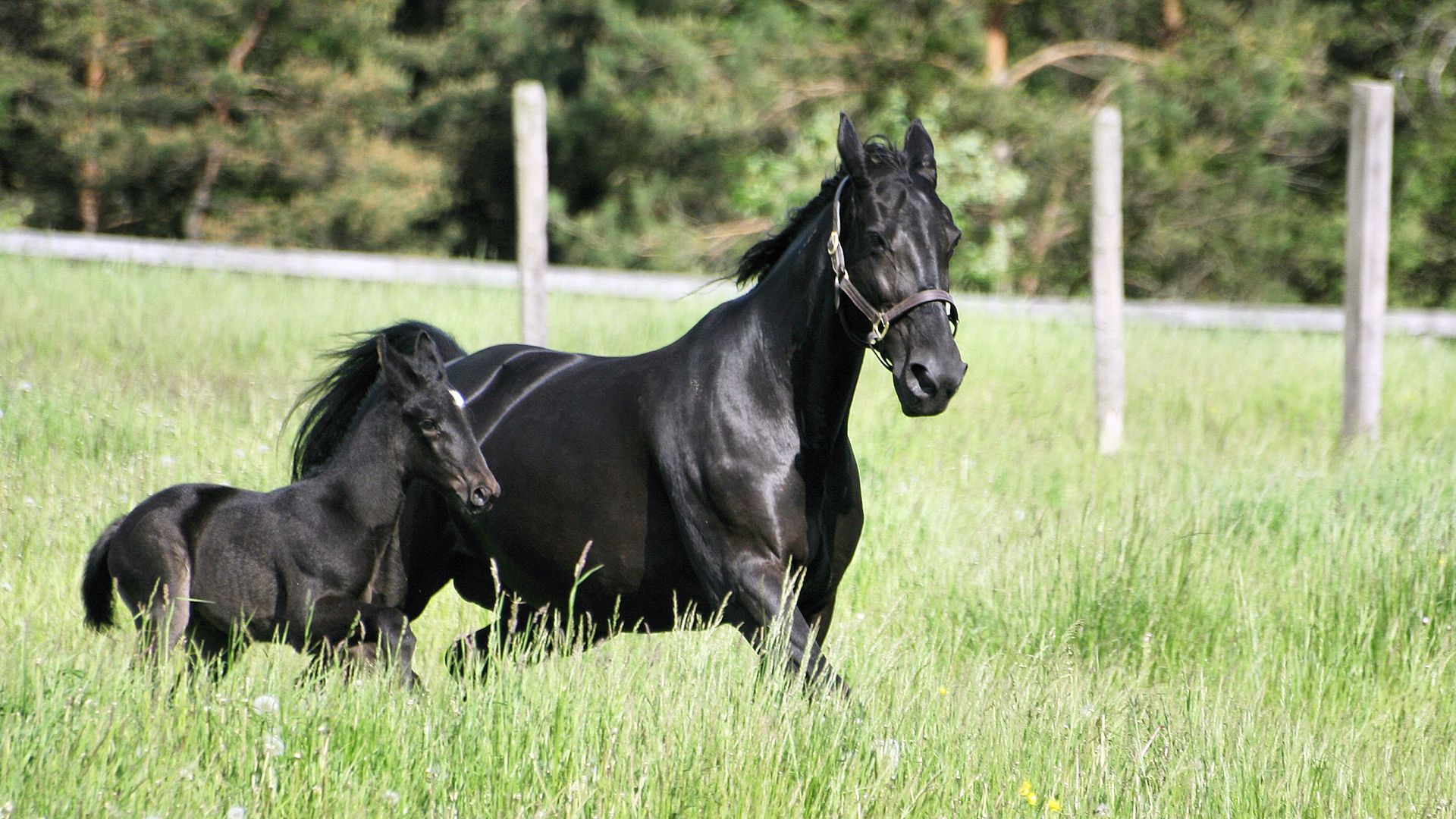
Height: 14hh-16hh
Weight: 1,000-1,400 lbs
Place of origin: Quebec, Canada
Use: farm work, driving, riding, racing
The official national horse of Canada, the Canadian is a descendant of French horses sent to the region in 1665 by King Louis XIV. Additional imports followed to establish an equine breeding population in the French colonies.
The breed is thought to share ancestry with British native breeds such as the Clydesdale as well as other European draft breeds. The Canadian horse has also influenced the modern Morgan, and they are usually bay, black, or brown. Historically, the Canadian was the ultimate all-rounder for saddle, farm, and driving work, and was also outcrossed with other breeds to serve different purposes. Today, its global population is around 6,000 animals.
19. Newfoundland
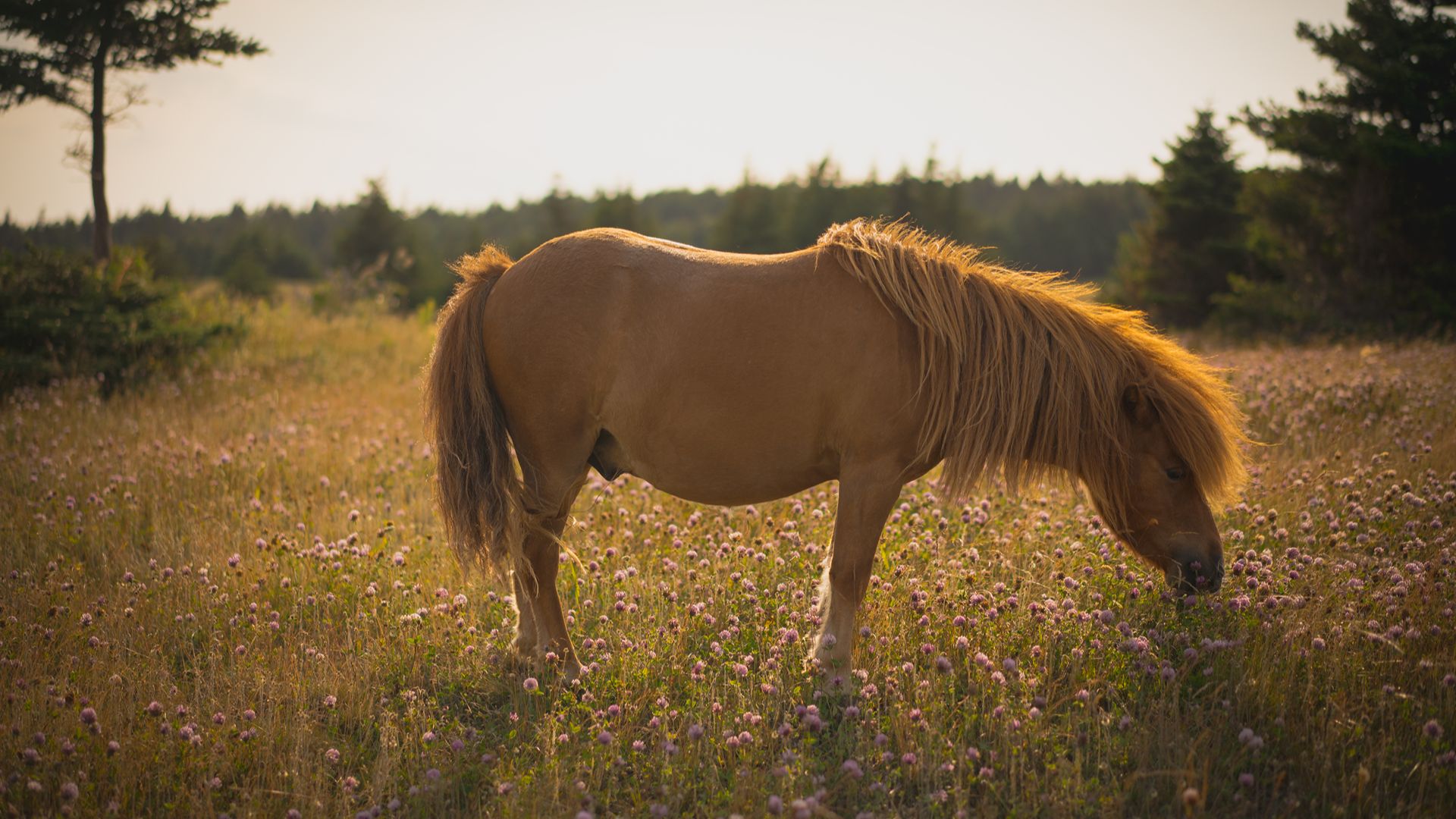
Height: 11hh-14hh
Weight: 400-800 lbs
Place of origin: Newfoundland, Canada
Use: farm and driving work, riding
Another Canadian breed, the Newfoundland, is a pony type established from equine stock brought over to the region by British and Irish settlers. The Newfoundland is thought to have a variety of British native pony breeds as part of its genetic makeup, including the Exmoor, Dartmoor, Highland, and Irish Connemara.
These ponies are built to withstand the harshest weather and, before the Industrial Revolution, were used to fetch kelp from the seashore, plough fields, and gather firewood. Breed numbers dwindled with the rise of machinery, and by 1980, the population dropped from several thousand to just a couple of hundred. The global population today is roughly 2,000.
20. Zorse
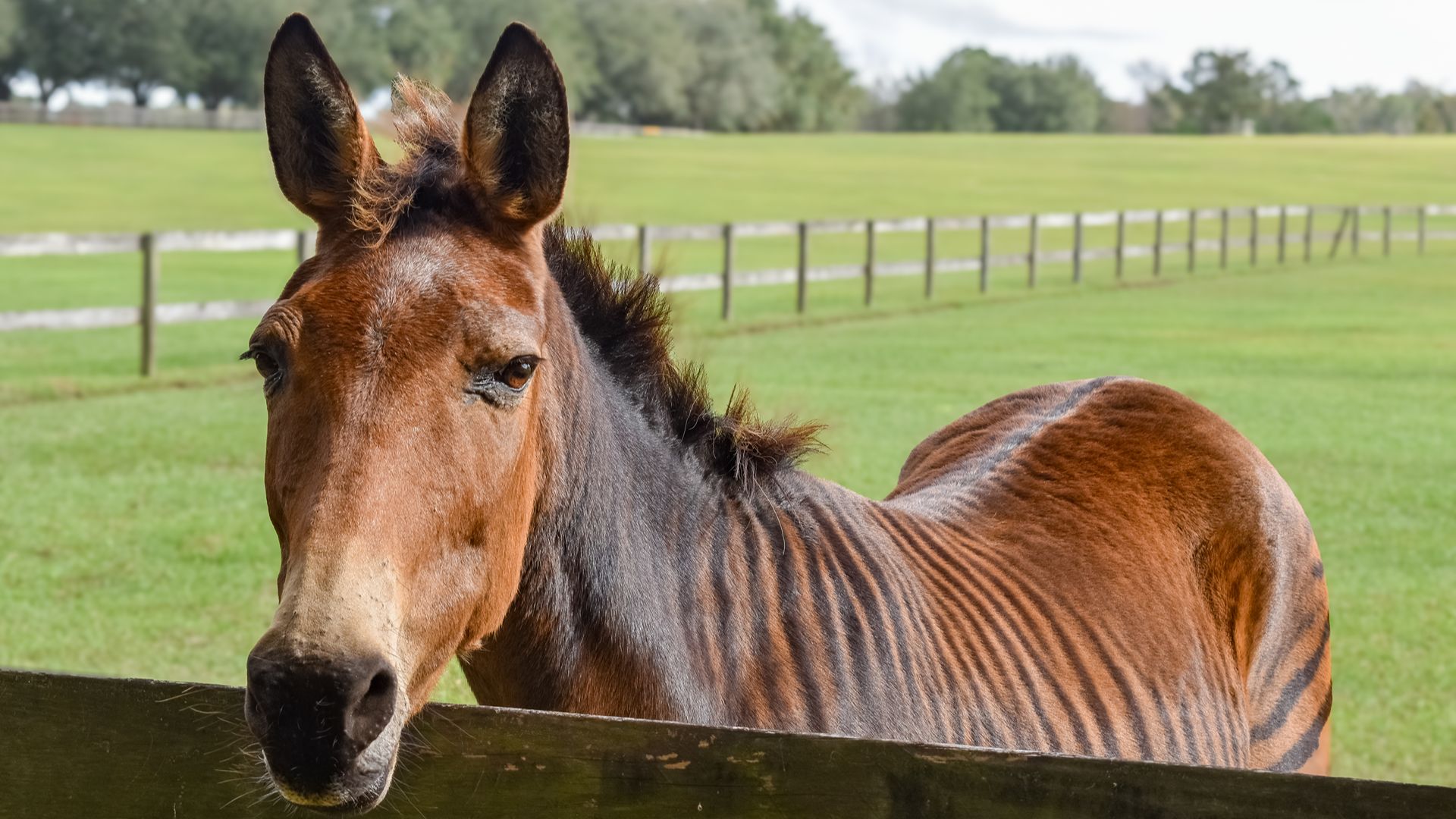
Height: 12.3hh-16hh
Weight: 500-1,000 lbs
Place of origin: Edinburgh, Scotland, UK
Use: pack and ridden work, and as pets
A zorse is the offspring of a zebra stallion and a mare that resembles the mother with some zebra markings overlaid on the base coat color. The offspring are sterile and cannot reproduce.
Early documentation of zorses can be found in the late 19th century, when Scottish zoologist James Cossar Ewart began his Penicuik Experiments that saw him cross various species as part of his study of genetics. There are estimated to be about 100 zorses worldwide.
Read next: Miniature horse breeds
Edited by Georgia Guerin and Alexis De Leaver.

Bethany is an experienced news and features writer with an equestrian specialism, and has been writing for internationally recognised titles, such as Horse & Hound magazine where she is currently features assistant, since 2017.
Prior to her career in journalism, she studied BA English at the University of Nottingham, where she graduated with a first class degree.
As well as cultivating a vast and far-reaching understanding of equine training and management, her first-hand pet care experience also ranges from dogs and rabbits to chickens and sheep.
She’s also volunteered at greyhound rescue centres by walking their four-legged residents.
When she isn’t writing, she's kept busy by her two horses and cocker spaniel, Matilda, who’s a dab hand at dog agility and loves performing her favourite party trick – weaving between her human’s legs as she walks.
